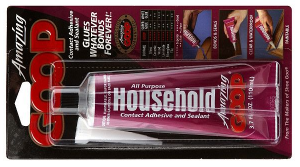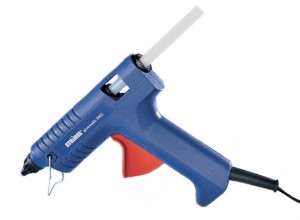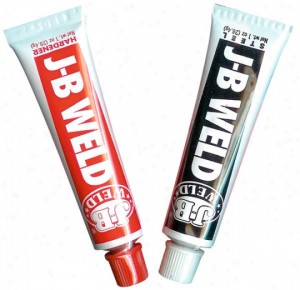I know what you’re thinking. What in the world could I possibly tell you about glue that you don’t already know? Yes, it comes in tubes and makes things stick together, but it’s not quite that simple. There are many different types of adhesives out there, and each has its place in the world of RC. To give you a better idea of what type of glue (or epoxy) you might need in different situations, I’ve listed out a few of my favorites here.
Also known as CA or “Super Glue”, this is a must-have for any hobbyist. It’s available in either “thin” or “thick” formulations, but most of the car and truck guys I know prefer thin CA for everything.
Drying/setting time: instant
Bond strength: medium
Bond type: rigid
Pros: Quick, easy, and relatively strong. One tiny drop will go a very long way.
Cons: Joints are brittle and will fail easily under lateral (twisting) loads. Will glue your fingers together faster than you can possibly imagine.
Best for: Gluing tires, fixing cracks in Lexan, repairing stripped screw holes in plastic.
There are several different types of Goop available, but my favorite is the general “household” stuff. It can be used anywhere you’d normally use servo tape, and it will do a better job. Best of all, Goop is 100% un-doable. Don’t like how something came out? Peel off the residue and re-glue. Easy.
Drying/setting time: 5-10 minutes
Bond strength: medium
Bond type: very flexible
Pros: Dried glue peels off cleanly with absolutely no sticky residue. Flexible joint won’t crack or vibrate loose.
Cons: Not the strongest or most permanent bond out there.
Best for: Mounting electronic components, gluing light buckets in a Lexan body
Popular with the arts and crafts crowd, hot glue has become increasingly used in the RC world over the past few years. Although glue guns can sometimes be a hassle, the glue itself is easy to work with and very reliable. It doesn’t come off easily though, so you really only have one shot to get your gluing right.
Drying/setting time: 20-60 seconds
Bond strength: strong
Bond type: semi-flexible
Pros: Very strong joints that don’t fail easily under a wide variety of circumstances. Quick-setting, easy to use, and will stick to nearly anything.
Cons: You need access to both electricity and a hot glue gun. Simultaneously burning and gluing your fingers together isn’t much fun, and removing hot glue residue can be a major chore.
Best for: All purpose permanent gluing, repair, and Lexan work.
Classic two-part epoxy is one of the strongest and most reliable adhesives out there. Epoxy is available in a wide range of set times; generally speaking, longer set times mean a better bond. As soon as you mix the resin with the hardener, the clock starts ticking.
Drying/setting time: varies with type (2 mins to 24 hours)
Bond strength: strong
Bond type: rigid
Pros: You have plenty of time to get your bond set up correctly and clean up goofs before the epoxy sets.
Cons: Mixing resin and hardener can be messy. Long set times are a drawback if you’re in a hurry, and residue is extremely difficult to remove.
Best for: Repairing broken parts that are subjected to moderate loads
You can think of JB Weld as epoxy on steriods. Like epoxy, this stuff comes in two tubes that you have to mix together. It will stick pretty much anything to anything else, including metal and glass, and it is the definition of permanent. JB Weld will not come off anything, ever, and it sets up so solid it can even be sanded and drilled. When all else fails, bring on the JB.
Drying/setting time: 24 hours
Bond strength: ridiculously strong
Bond type: rigid
Pros: Strongest and most durable bond available, period. Suitable for permanent repairs in high-stress locations.
Cons: Very long set time makes it unsuitable as a field repair.
Best for: Anything you want to stay glued for all eternity.
The post Know your glue appeared first on RC Car Action.








